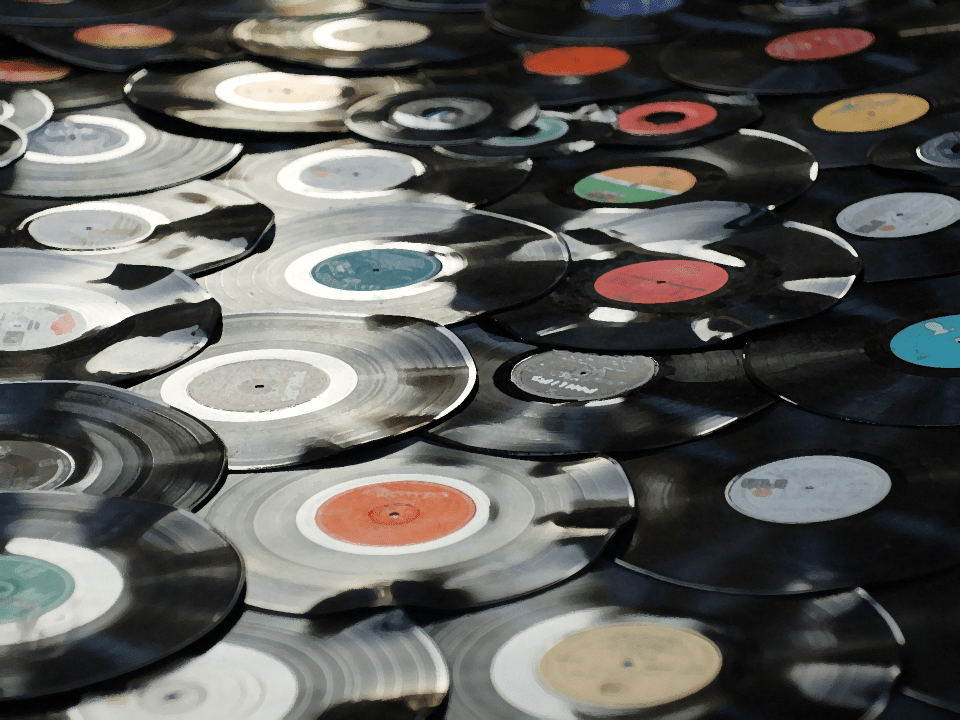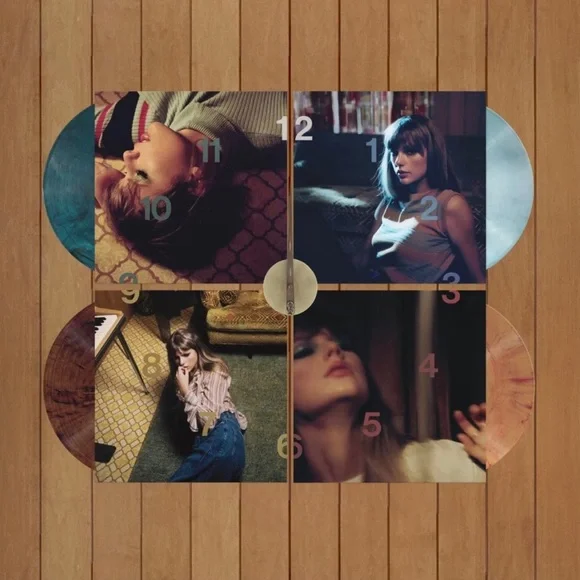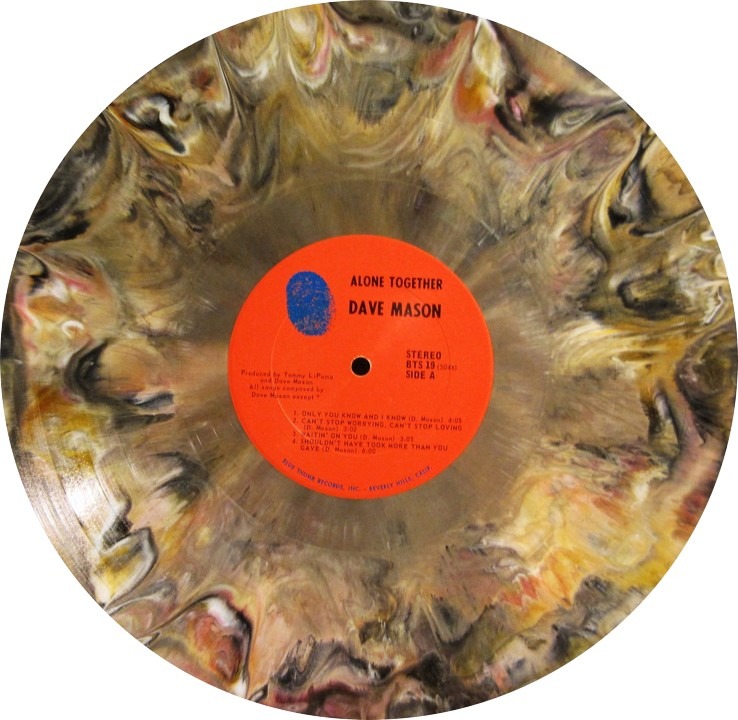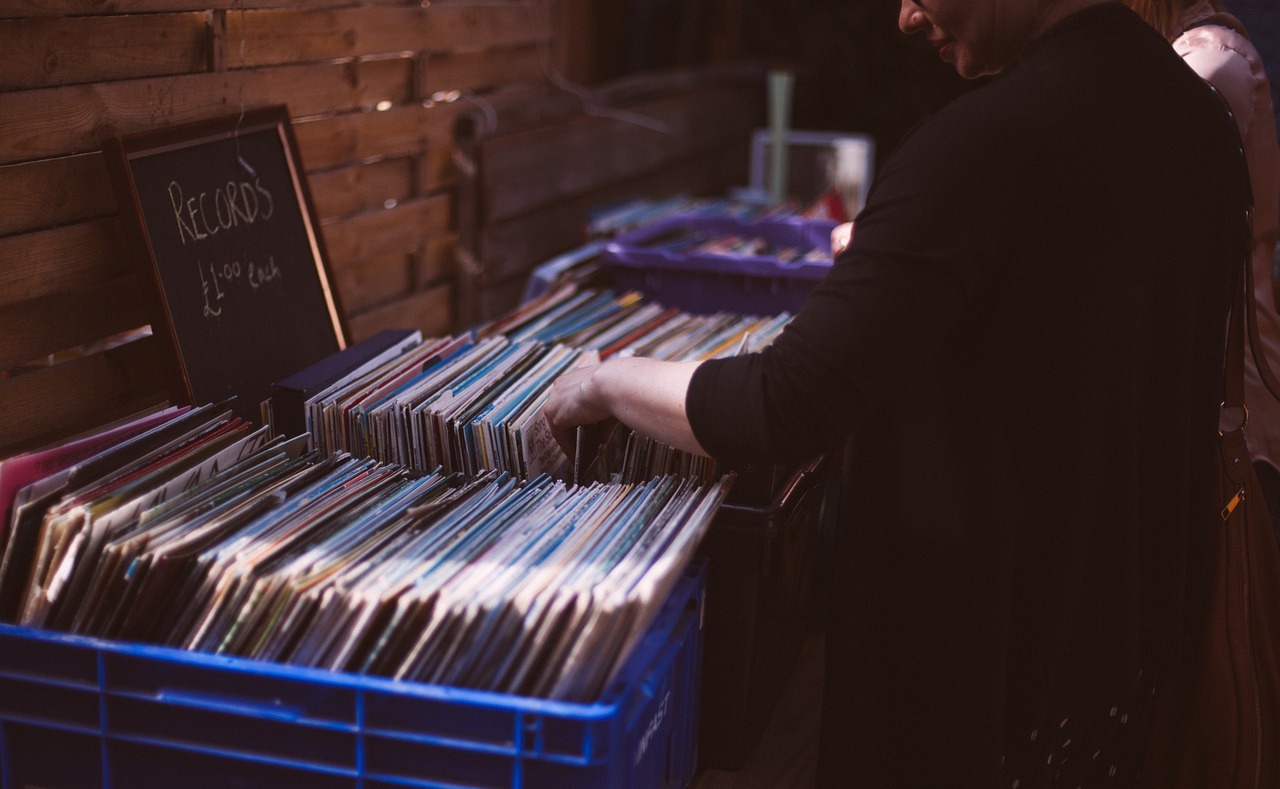
A couple months back I wrote a blog post about vinyl’s ongoing comeback in the physical world of music that carried the same name as this post: “Vinyl: What A Long Strange Trip It’s Been.” At the time, I didn’t expect there would be a Part 2, but here we are.
The world of vinyl is strangely moving…fast. When you think about it, it wasn’t all that long ago when the entire world moved to digital music consumption, eschewing physical music forms like the vinyl album or CD. Here we are in 2024, and we continue to see that resurgence showing up in new and creative ways.
One of the most eye-opening stats in the original post was that half of those who bought at least one vinyl record in 2023 didn’t own a turntable or record player!
 Clearly, this is the collectible market unchained, taking advantage of millions of music lovers desiring to own a physical product, complete with album art, liner notes, lyrics, and other creative packaging. As those of us old enough to remember vinyl’s heyday, staring at these physical assets while listening to the music itself was part of the enjoyment of experiencing an artist’s best efforts. The other joy, of course, is carefully taking a precious vinyl record out of its sleeve, placing it on the turntable, picking up the tone arm and placing it on Side One, Cut One.
Clearly, this is the collectible market unchained, taking advantage of millions of music lovers desiring to own a physical product, complete with album art, liner notes, lyrics, and other creative packaging. As those of us old enough to remember vinyl’s heyday, staring at these physical assets while listening to the music itself was part of the enjoyment of experiencing an artist’s best efforts. The other joy, of course, is carefully taking a precious vinyl record out of its sleeve, placing it on the turntable, picking up the tone arm and placing it on Side One, Cut One.
Thanks to algorithms and digital music, the creative process has been co-opted by the digital format itself. Songs have gotten shorter and they start out hotter and hookier in an effort to put a damper on song “skipping,” library boredom, or both.
The smartest, savviest artists aren’t just leaning into vinyl – they’re embracing it – by celebrating physical music with their fans, while creating new and innovative formats and features that help bring a sense of freshness and modernity to the music industry.
But when does a fad become a trend, in essence “the second coming of vinyl?” Is this just another wrinkle in musical time, or is there something truly lasting happening here, possibly changing the economic arc of the industry?
For clues, we need only to analyze what’s going on at the Taylor Swift camp during the last several years. When you think about it, many of her tactics are old school. There are those clever “Easter egg” messages that dot her music, especially relevant and recognizable to Swifties, in much the same way the Beatles regularly ran a “game within the game” with their albums, visuals, and lyrics. The IYKYK aspect within her community of committed acolytes takes the fan experience to a much higher level.
Taylor also isn’t afraid to get political, apparently unconcerned about how her statements will go over with those who don’t share her views or philosophies. In this way, she mimics first generation rockers like Lennon, Dylan, and others who weren’t the least bit afraid to share their viewpoints. You may think I’m blasphemous to lump her in the same area code as these Classic Rock Mt. Rushmore artists. But the fact is, it’s riskier in today’s toxic environment to even urge people to vote, much less be pro or anti an issue.
Ms. Swift has also upgraded touring and merch to execution levels the likes we’ve not seen before. As we learned in a blog post earlier this month – “Welcome Back, My Friends, To The Show That Never Ends” – once you get them in the stadium, expanding the fan experience is what it’s all about. It’s Sales 101: It’s always easier to get an existing customer to spend more than it is to attract new customers in the first place.
Take, for example, the six different vinyl versions of her Midnights albums that when pieced together form a clock (approximately $350 new).

These days, vinyl can plays a role in the story of Taylor Swift’s exponential growth. And the enormous profit margin from vinyl is another key incentive.
Last month, the New York Times’ Ben Sisario referred to it as Taylor’s “rainbow of vinyl albums,” irresistible to fans, collectors, or both. He dates the phenomenon back to 2020 with the release of Folklore and its nine vinyl editions. For uber Swifties, the Beanie Babies’ mantra “Collect them all” is resonating.
On the back of both the “Eras” concert tour and the five-album colorful versions of 1989 (Taylor’s Version), she sold an amazing 3.5 million albums last year in the U.S. alone. Believe me – every artist, classic or current – is running the vinyl numbers. It comes down to determining how brands – or bands – can get the most out of their most fanatical of fans. Taylor Swift is taking no prisoners.
Now, her newest double album set, The Tortured Poets Department, follows suit. It comes in many different variants, including multiple vinyl versions, CDs, and even cassettes.
It used to be that 99% of vinyl albums were pressed in the familiar “basic black.” Only on occasion did artists get the urge to colorize their records, often as “collector’s editions.” (It probably cost the labels more to produce albums this way, especially limited pressings.)
I managed to snag one of the rare “marble” versions of Dave Mason’s Alone Together first solo album, a personal favorite that spent much time on my turntable when the album was first released in 1970. But these colored vinyl editions were rarities back in the day. Virtually no artists released them.

Not anymore. In fact, artists are getting more creative, utilizing modern technology with the nostalgic comfort of vinyl record albums. A novel concept from the Grateful Dead (who know a thing or two about vinyl and “long strange trips”) celebrates the 50th anniversary of From the Mars Hotel.
It’s a picture disc with what appears to be spectacular visuals, even in our AI/AR/VR world. I would expect to see “software” like this at CES:
SNEAK PREVIEW: From The Mars Hotel (50th Anniversary Animated Picture Disc)
Round and round and round and round
Don’t take much to get the word aroundIf you’re wondering how the heck this one works, we’re here to help. Get the step-by-step from zoetrope pioneer @drewtetz and… pic.twitter.com/ZoDBbFpjKs
— Grateful Dead (@GratefulDead) May 9, 2024
As the video explains, you view the animation through your smartphone, the brighter the light the better.
Officially, it goes on sale on the first day of summer (June 21), but you can pre-order your copy here for $28 and change.
And the trend continues to spiral. While on Twitter earlier this week, I bumped into the ultimate radio rocker, Matt Pinfield, showing off the newest in vinyl collectibles from Pearl Jam:
Thank you to the band+the @pearljam family for
sending me this crystal clear vinyl copy of one of the best albums I’ve heard in years start to finish. I’ve been very vocal about my love for “Dark Matter” I can’t wait to see the show Wednesday night at the Forum! pic.twitter.com/z0kgKdBRyo— Matt Pinfield (@mattpinfield) May 21, 2024
It’s ironic how the convenience, price, and accessibility of digital music has changed the way we consume and own music. Certainly, it was never collectible. And in a capitalistic business – and music most definitely fits the description – not being able to market tangible, physical music assets is a problem. Unless, of course, you’re Spotify.
As musicians – especially those at the top of the pyramid – assess their profit centers in this hi-tech, AI-infused millennium, it is fascinating to realize how throwback products are making their way back into the lives of consumers – and collectors.
As physical music formats – albums, cassettes, and even CDs – became economically unfeasible in a digital world, artists were left with just concerts and merch to sustain themselves. For many, vinyl may be the way back. A question is whether this trend can trickle down to non-superstars in coming years, especially as vinyl technology changes.
Let’s go back to last March’s post. At that time, our Techsurvey 2024 study revealed a modern high watermark for turntable ownership. Now, nearly four in ten (38%) core radio listeners own a device that plays records. On the one hand, this is encouraging. But on the other, it means a majority of consumers do not own a turntable, not surprising given the disappearance of vinyl in the digital age, and the explosive growth of devices like iPods.
records. On the one hand, this is encouraging. But on the other, it means a majority of consumers do not own a turntable, not surprising given the disappearance of vinyl in the digital age, and the explosive growth of devices like iPods.
But then the most amazing stat came from inverting a Luminate finding on vinyl buyers and turntable ownership. The way Music Business Worldwide looked at this data, 50% of U.S. vinyl buyers do not own a turntable, reinforcing just how many consumers are collecting records.
Obviously, this is yet another indication of Taylor Swift’s marketing genius, but it also suggests how music radio stations might be able to benefit from the phenomenon, especially when it comes to contests featuring novel prizes. I just wish there was a way to invest in “vinyl futures.”

Think back to your Communications 101 class when you first learned that Marshall McLuhan (pictured) coined the phrase, “The medium is the message,” back in 1964.
He was telling us how the medium used to communicate or distribute content – visuals, words, and yes, music – has an impact on the message itself.
In the case of vinyl, we’re watching something we haven’t seen before – a once near-extinct medium resurrected to deliver a new message in a new millennium. No algorithms, no files – just music we can hold in our hands.
As the prescient philosopher, Mr. Spock, would no doubt say, “Fascinating.”
- What To Do If Your Radio Station Goes Through A Midlife Crisis - April 25, 2025
- A 2020 Lesson?It Could All Be Gone In A Flash - April 24, 2025
- How AI Can Give Radio Personalities More…PERSONALITY - April 23, 2025




Took my 12 yr. old daughter to the local record store on record store day. Line down the block. Waited an hour to get in. Everyone was totally cool with it though. The store is killing it and also distributing to so many other record stores in the area and on line that they are opening a facility just to handle that part of their business. It wasn’t too long ago that they were probably thinking about if they can survive.
Owning the music you pay for is an extremely underrated part of this. “I paid for this piece of vinyl and it’s mine forever!” is something my kids LOVE. Especially in a world where the rules of the digital world change daily – upped fees, things leaving the platform, knowing your favorite artists getting ripped off by the Spotifys of the world etc.
However, just stop with the “bring back cassettes” movement I’ve seen. They sucked then and they suck now!
I guess when it comes to cassettes, you can literally say, “Boo HISSS”!!
With cassettes, one of the main attractions was (and perhaps still is) the ability to create and then share personalized mixtapes. That really did liberate music for so many folks. In fact, Bow Wow Wow’s debut single was controversially about the practice…
https://en.wikipedia.org/wiki/C·30_C·60_C·90_Go
Great comment, Eric. I think you’ve nailed the ownership aspect of this. As for cassettes, they were about convenience, not quality.
Cool Fred.
How about a return to radio station produced vinyl song compilations?
This one we did at WGSP Charlotte in 1985 featured great original art work… sold for $7 back then…fetching 10 times that now on ebay. And I have a stash of them to fund my long term health care!
https://www.ebay.com/itm/352063606760
Keep up the great writing!
Paul
Great point and would make a great statement. I was involved with a number of these projects myself. No reason why a smart radio station couldn’t launch a vinyl album. Appreciate it, Paul.